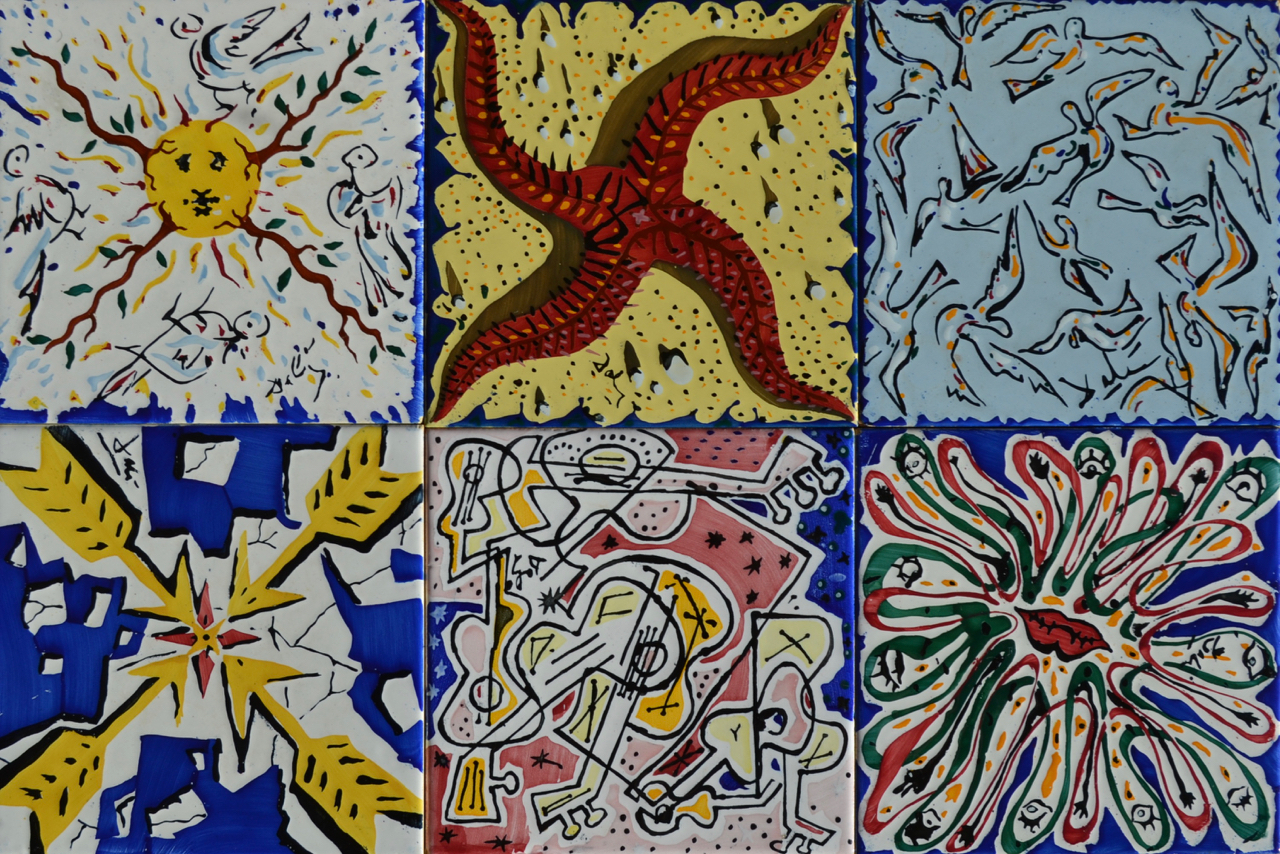
In 1976, German lawyer Peter Ackermann made a momentous purchase: He bought 60,000 ceramic tiles designed by
Salvador Dalí. The events that led to the purchase go back many years. One of Ackermann’s clients was struggling financially and couldn’t afford to pay his legal fees. In lieu of payment, he offered to arrange a meeting between Ackermann and the Spanish Surrealist Dalí. The client’s wife was an old friend of Gala Dali, Salvador’s wife. Naturally Ackermann took him up on the offer.
Months later, while on business in Paris, where Dalí lived at the Hotel Meurice. Ackermann met with the client’s wife, and together they went to Restaurant Lasserre, one of Gala’s favourite spots. They asked a waiter to deliver their business cards to the table where the Dalís were dining. According to Ackermann “they waved me to their table and we had some nice conversation.” “Fortunately, I spoke French (you don’t speak English or German to Salvador Dalí), and they invited me for tea the next day in their apartment”.
They exchanged pleasantries and discussed art and work, Ackermann recalls. Before departing, the lawyer agreed to work with the Dalís’secretary on some of the artist’s financial deals.
Some years later Dalí contacted the lawyer. He was seeking a buyer for a collection of tiles he had produced in Spain two decades previously. From the original run of 100,000 tiles 60,000 remained. Ackermann bought them all!
Although having no idea what to do with them Ackermann bought them all. Ackermann explains, “whatever he sells to you, when you can afford it, you buy it. You don’t think twice.
The tiles were produced in Onda, Spain, in 1954, at the El Siglo tile factory. There’s an apocryfal story that the Minister of Culture in Francisco Franco’s government commissioned them for the interior of a swimming pool.
The tiles come in sets of six, measuring 20cm square. They are titled “La Suite Catalane,” referring to the region of Spain from where Dali came. The tiles feature loose, brushy motifs, like lips, birds, and a sun, in a palette of rich primary colours and pastels.
Ackermann kept the entire cache for some four decades, although work and family commitments prevented him from doing anything with them. The tiles weigh some 44 tons and were originally kept in Zürich until Ackermann moved them to Berlin. Ackermann estimates he’s spent a “serious seven-figure” sum on storing and moving the tiles over the years.
In 2017 as he approached 80, he sought a buyer, with the intention of donating the proceeds to his foundation, Kreuzberger Kinderstiftung, which provides education for underprivileged children. Ackerman believes it’s unlikely he will attract a single buyer. Laughingly he said “I don’t think there is another weirdo like myself who would want to own 60,000 of these”. Ackermann was adamant that the tiles should not be used for a pool. “Each one of these beautiful pieces is an eye-catcher,” he notes. “They are very nice to be displayed over a large surface—not inside a swimming pool.
The remaining tiles from the original run have sold in private sales and auctions over the years, fetching as much as $2,300 for a set of six, and over €500 for just one. We have been fortunate enough at White Court Art to have had some of these beautiful sets of tiles. Each set packed in straw in now crumbling little wooden boxes. Handling pieces by iconic artists is a real privilege and these tiles are no exception. There’s a connection, some sort of mirror into the past and the artists creative process.
